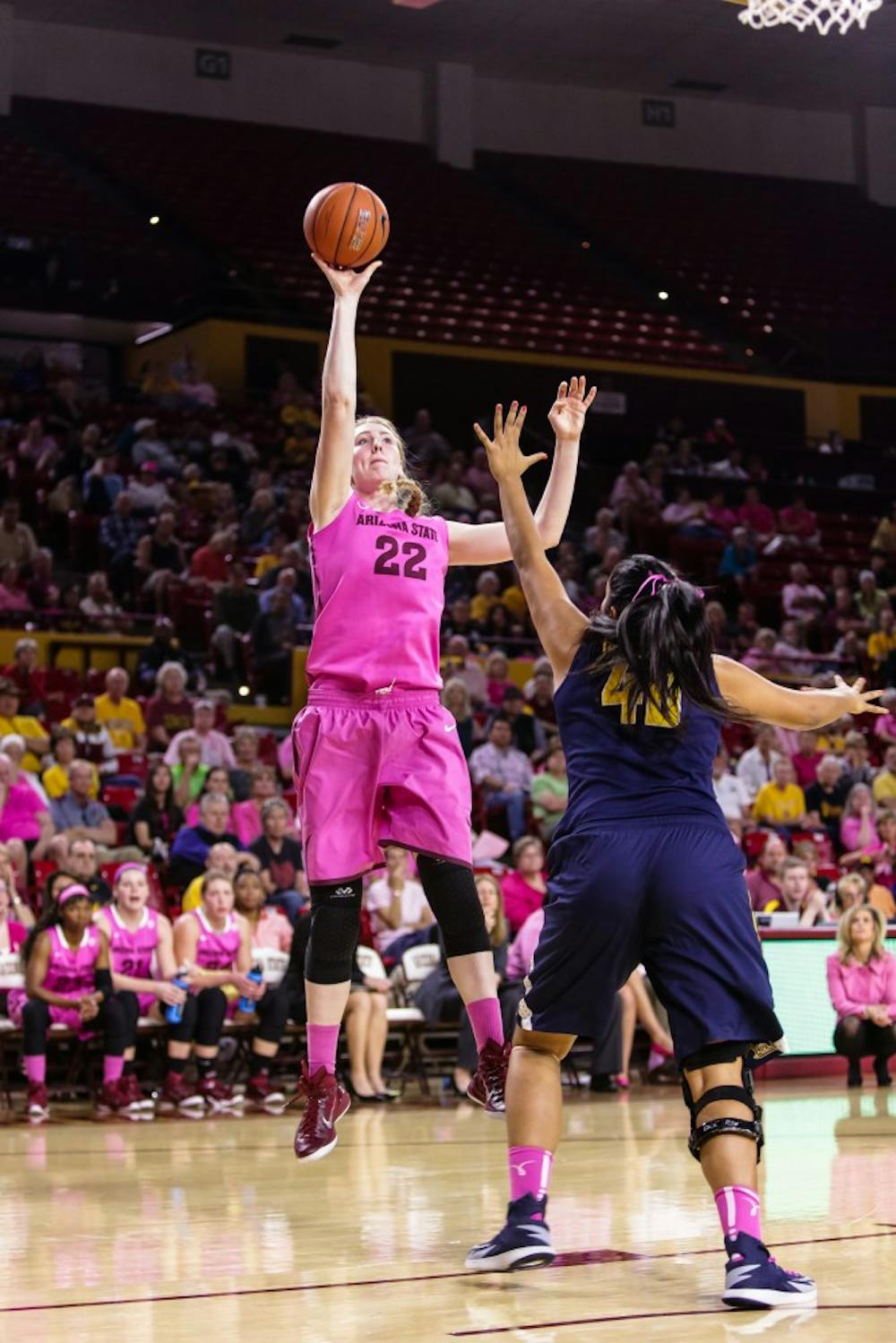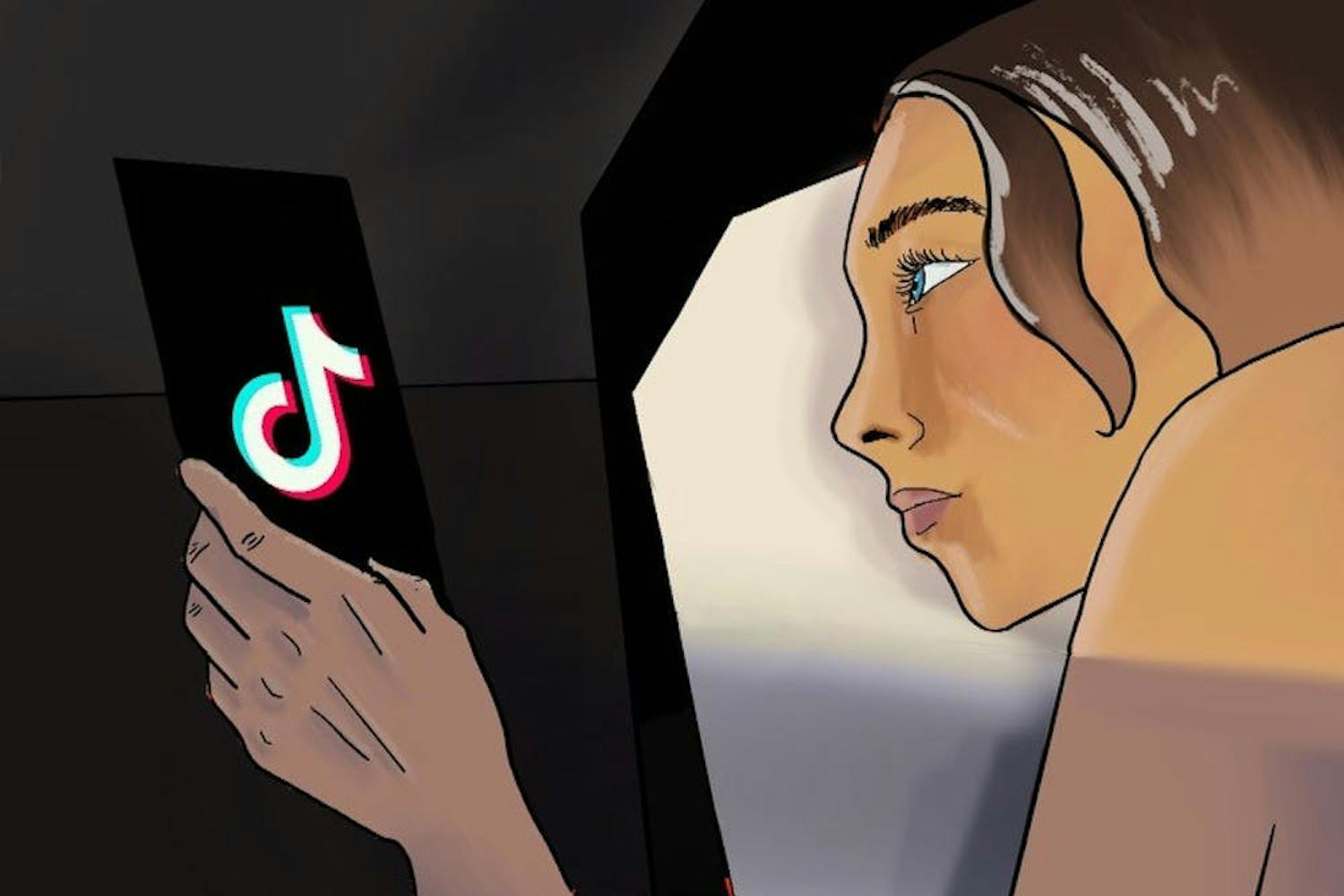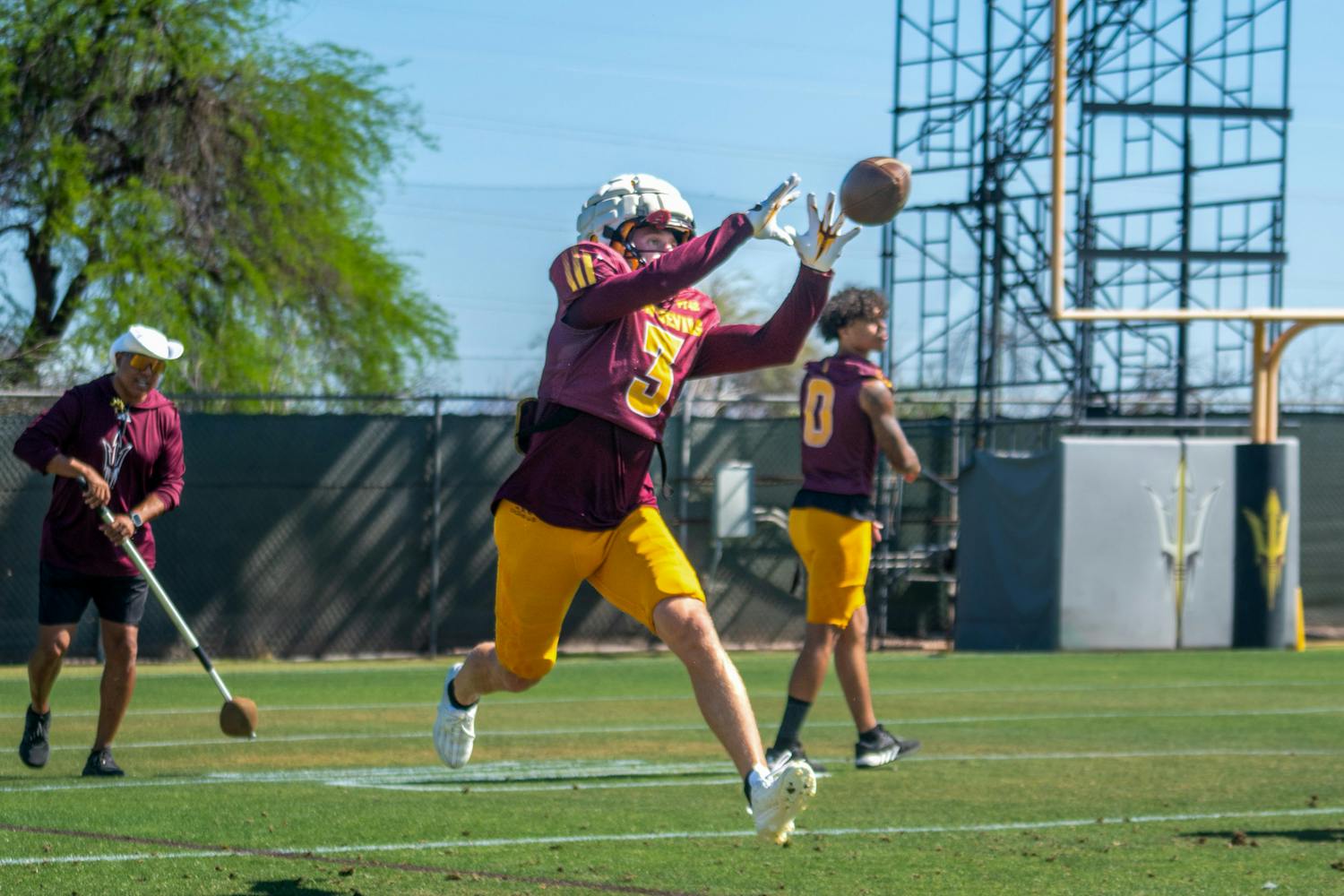 ASU sophomore center Quinn Dornstauder shoots over Cal senior forward Justine Hartman
ASU sophomore center Quinn Dornstauder shoots over Cal senior forward Justine Hartman at Wells Fargo Arena on Feb. 8, 2015. ASU would have a cold night offensively shooting just
32.3 percent from the field as they fell to the Golden Bears 50-49. (Daniel Kwon/The State
Press)
Third-seeded ASU women's basketball doesn’t have a go-to player on offense. It doesn't have that one person who controls the entire game, who opposing teams plan against.
Heading into the NCAA tournament, ASU’s biggest strength may be its depth. Head coach Charli Turner Thorne said when a starter is hurt or struggling, bench players have been able to take her place at any time in the year.
“(It’s) one of the things that makes us as good as we are,” she said, “I don’t think a lot of teams have that.”
The depth has been apparent in the closing weeks of the season, particularly the interior players. They stepped into larger roles when sophomore forward Kelsey Moos got injured.
Sophomore center Quinn Dornstauder was inserted into the starting lineup.
“It’s a different mindset, starting,” she said, “Getting more physical, learning my role.”
In those five games, she averaged 7.2 points and 6.2 rebounds in just under 25 minutes per game.
Dornstauder has been improving all season on both sides of the court. Her biggest obstacles, aggression and learning the playbook, revolve around her history on the court.
Dornstauder lived in Canada for the majority of her childhood, with the exception of one year when her family moved to France. She said basketball in the U.S. is much different.
“Basketball is kind of like the sport down here,” she said. “Everyone plays, the competition level is better in general. It’s more physical, faster, that sort of stuff.”
She had to learn to play more aggressively against athletes who had grown up in the States.
“(Aggression is) not so much a skill. … It’s a habit,” she said. “It has to be ingrained in what you do.”
Dornstauder is an offensive-minded player who has led ASU in scoring twice, both times coming off the bench. Her go-to look, her right-handed skyhook, is vicious due to her 6-foot-4 height and long arms.
The antithesis of Dornstauder is freshman center Ayanna Edwards. Despite being the same height and position, their games are very different.
“People call me Shaq,” Edwards said. “You can, too.”
That’s not the only thing people call the 6-foot-4 goliath. After defeating Utah on Feb. 27, she said her teammates refer to her as a brick wall.
“If you run into me, you’re going to fall back,” she said, “I’m not going to move.”
While Dornstauder has played since early elementary school, Edwards didn’t play competitively until the ninth grade.
She played volleyball before but her dad made her choose just one sport. When she couldn’t decide, her dad chose for her. She said she was mad at first, but came to the idea.
“It’s kind of a family torch thing,” she said. “My entire family plays basketball, everyone makes it to small (Division I schools). I’m the first to make it to a huge D1.”
Upon graduating high school, Edwards was ranked the No. 14 center in the country by ESPN Hoopgurlz Top 100. She was raw, though, and was mainly utilized on the defensive end, Turner Thorne said.
“(Sacramento) High had a ton of Division I players… they didn’t really need her to be a big force,” Turner Thorne said.
Once she got to college, Edwards had trouble finishing at the rim and even more trouble controlling her strength. She consistently knocked down defenders and was called for offensive fouls.
“When I first got onto the court, I was a bit of a spaz,” she said.
As a freshman, she’s working hard to improve. The progress is apparent, she’s knocking people down less and confidence is oozing from her.
She said her conditioning has improved the most.
“In high school, I never conditioned so I was not used to this speed and pace,” she said. “And we’re not at a normal college, this is coach Charli basketball because it’s just like, ‘Go, go, go, go.’”
 ASU redshirt junior Eliza Normen goes for a layup against Cal freshman guard Gabby Green in the second half at Wells Fargo Arena on Feb. 8, 2015. (Daniel Kwon/The State Press)
ASU redshirt junior Eliza Normen goes for a layup against Cal freshman guard Gabby Green in the second half at Wells Fargo Arena on Feb. 8, 2015. (Daniel Kwon/The State Press)A lot of her improvement is because of the coaches and working out the kinks of her post game with the practice squad. Redshirt junior Eliza Normen is another reason the young ASU interior players have seen success.
“Everyday, she’s one of our leaders,” Turner Thorne said, “She’s one of the hardest workers on a really hard-working team.”
Normen said she’s helped mentor the bigs and teach them the tricks of playing in the conference, which include “embracing the physicality” and “having a chip on your shoulder,” she said.
Normen averages about 14 minutes per game and has had injury problems since her senior year of high school. She missed two years of basketball and said she is consistently rehabbing her ailing back, legs and knee.
“Her body is that of a 30-year-old,” Charli Turner Thorne said.
Normen’s job on the team isn’t to light up the stat sheet. She said that while she crashes the glass hard, an aspect of her game that she focuses on in setting screens.
“Head hunting is the biggest part and sprinting to your screen,” she said. “We’ve struggled with that a little bit this year and we’re trying to get back to just being super physical.”
Despite not having the most glamorous role, Turner Thorne called Normen invaluable to the team.
“Eliza’s in our core (group),” she said. “She knows we need her.”
This depth allowed ASU to survive in the five games without their starting power forward, and in the process, it allowed Moos to get some rest going into the NCAA tournament. It also gives the team the opportunity to go big next year and start a lineup of Moos, Dornstauder and sophomore forward Sophie Brunner with Normen and Shaq coming off the bench.
“We started that, we’d like to build on it,” Turner Thorne said, “We just get so much bigger, better rebounding.”
Reach the reporter at logan.newman@asu.edu or follow @Logan_Newsman on Twitter.
Like State Press Sports on Facebook and follow @statepresssport on Twitter.




